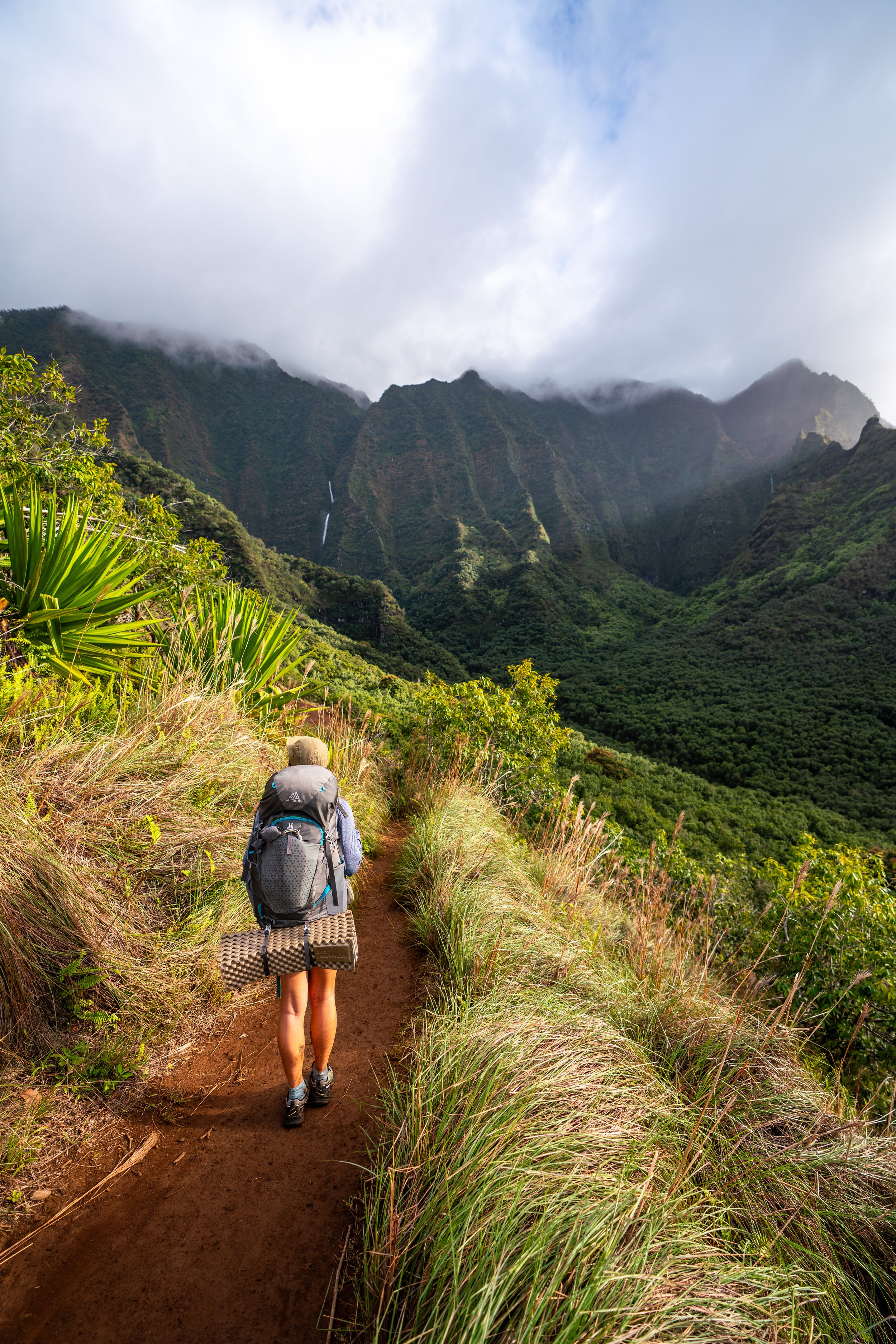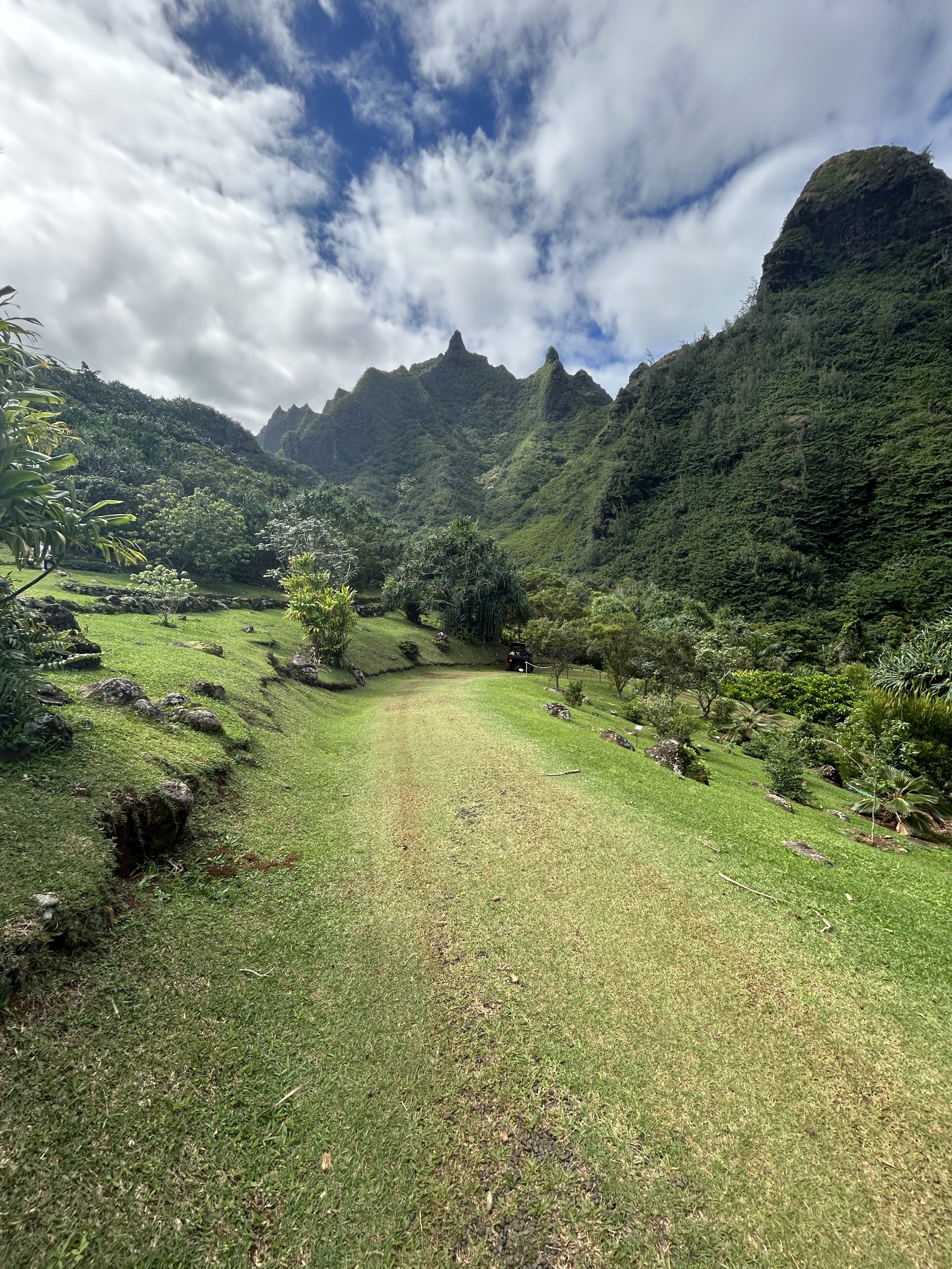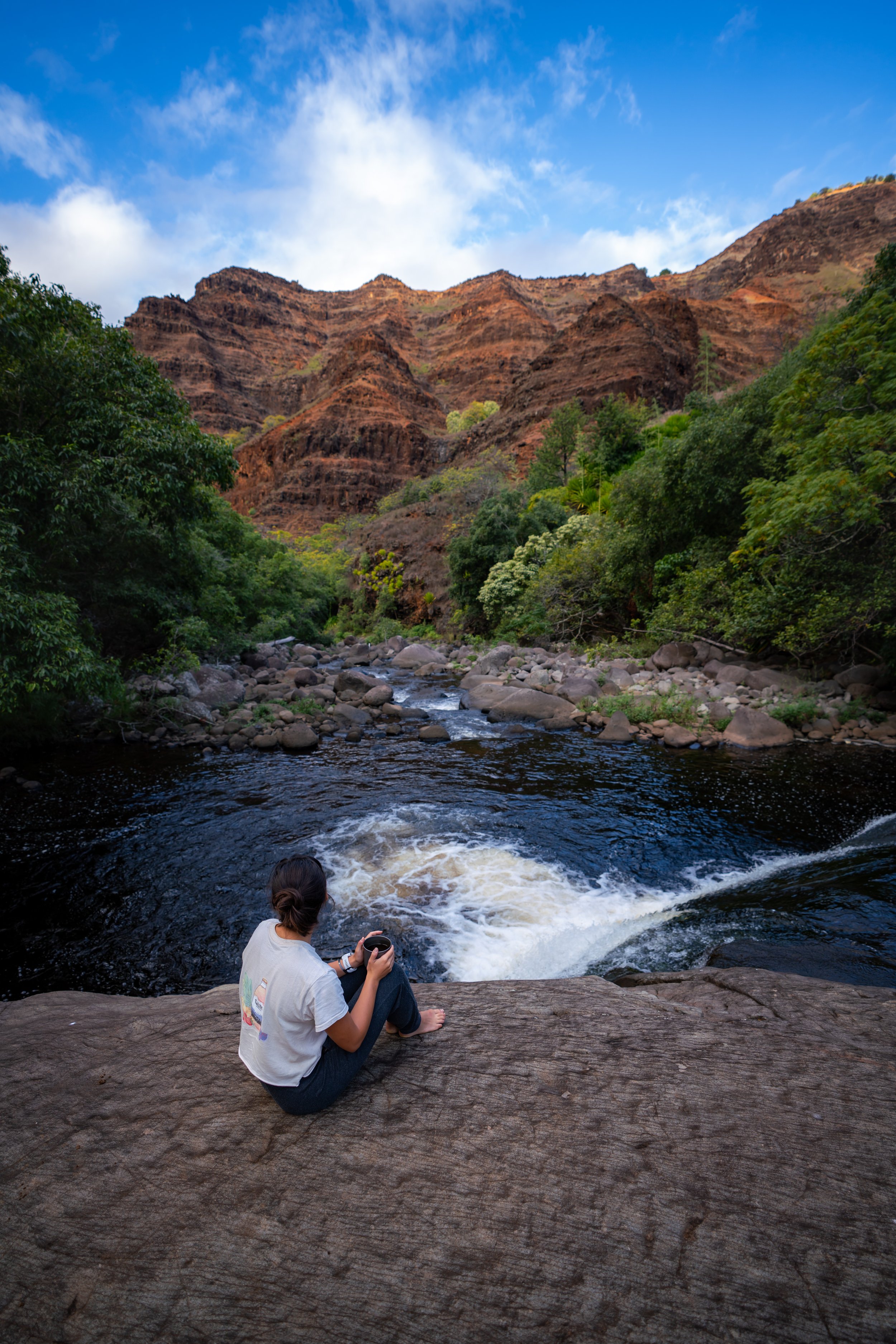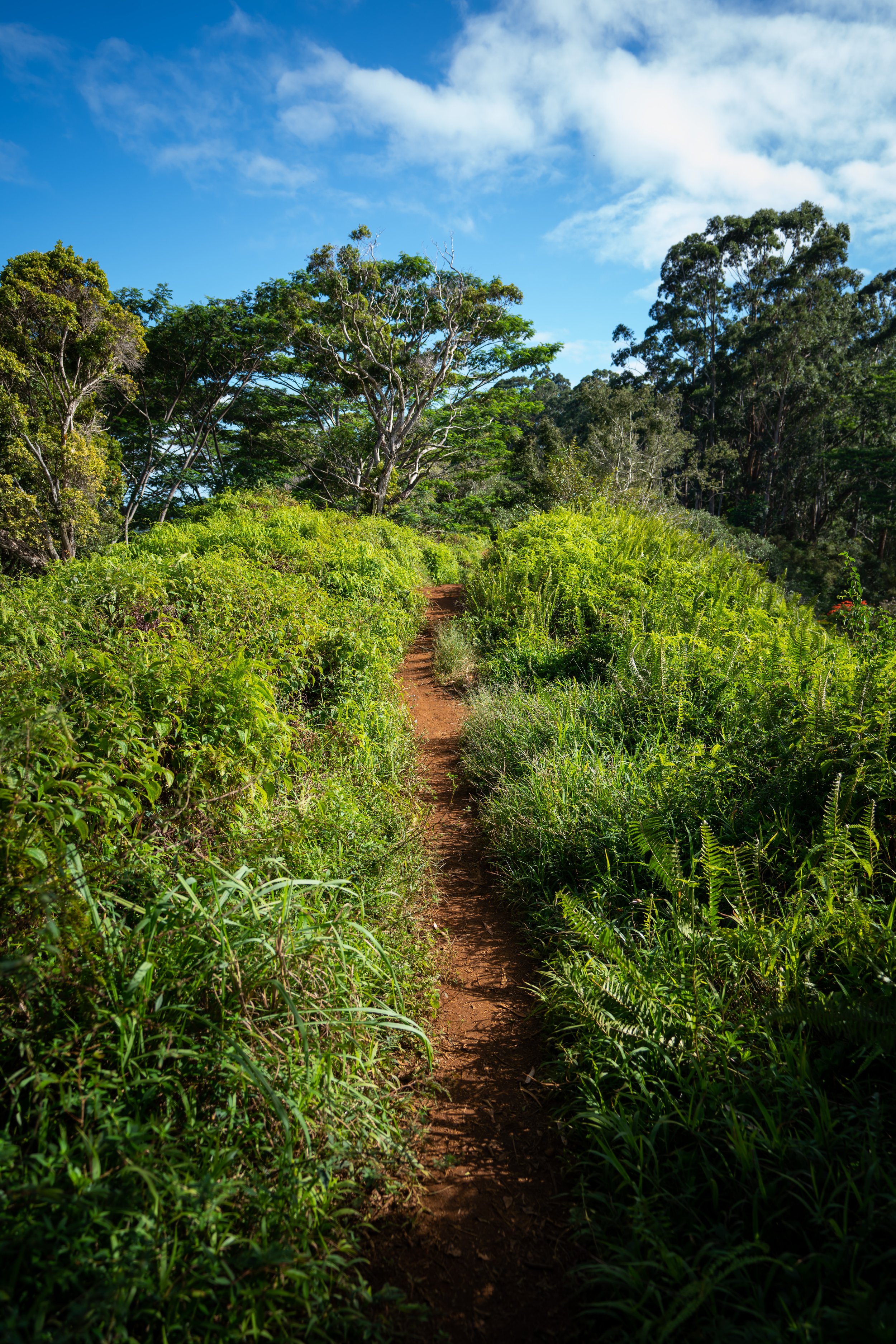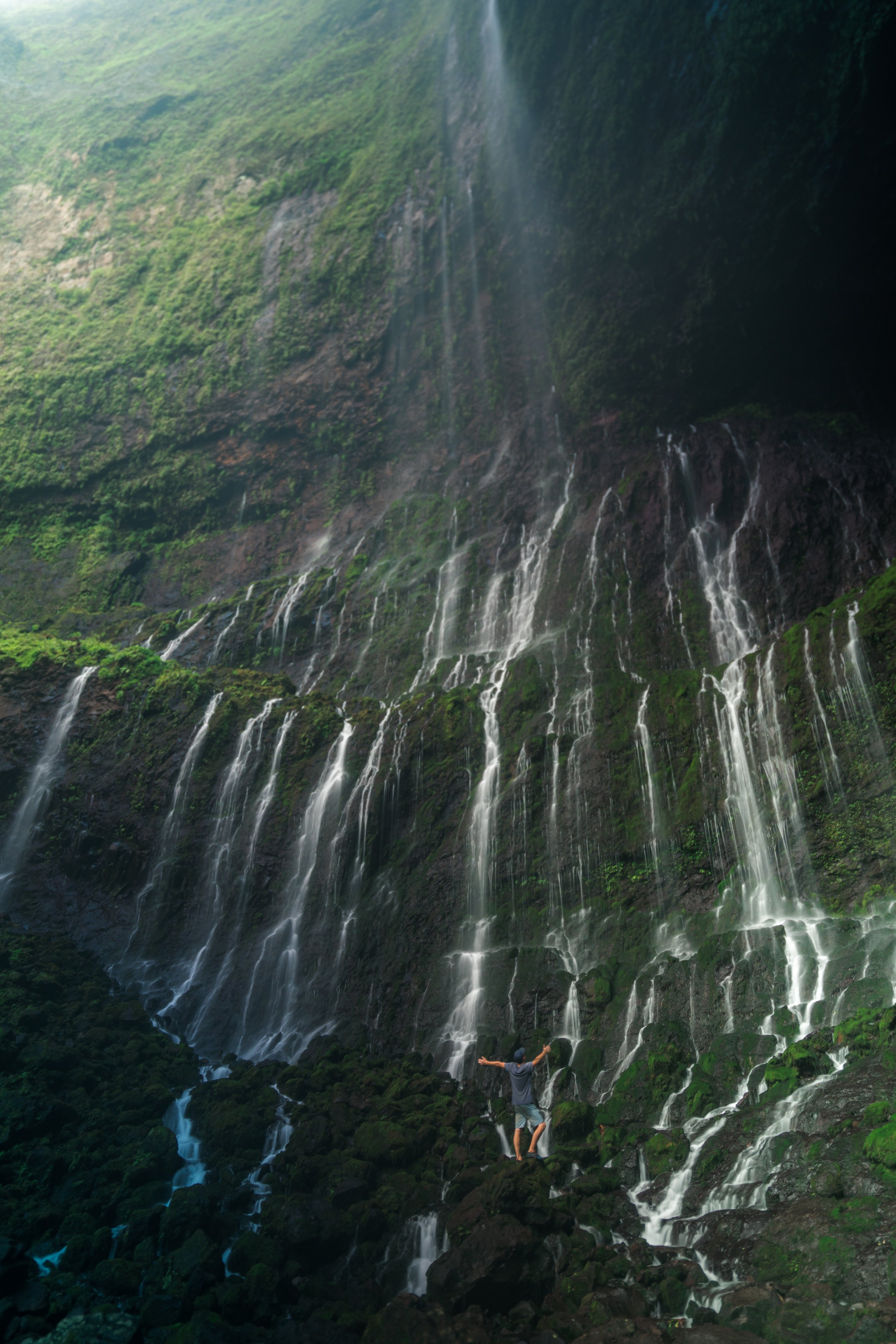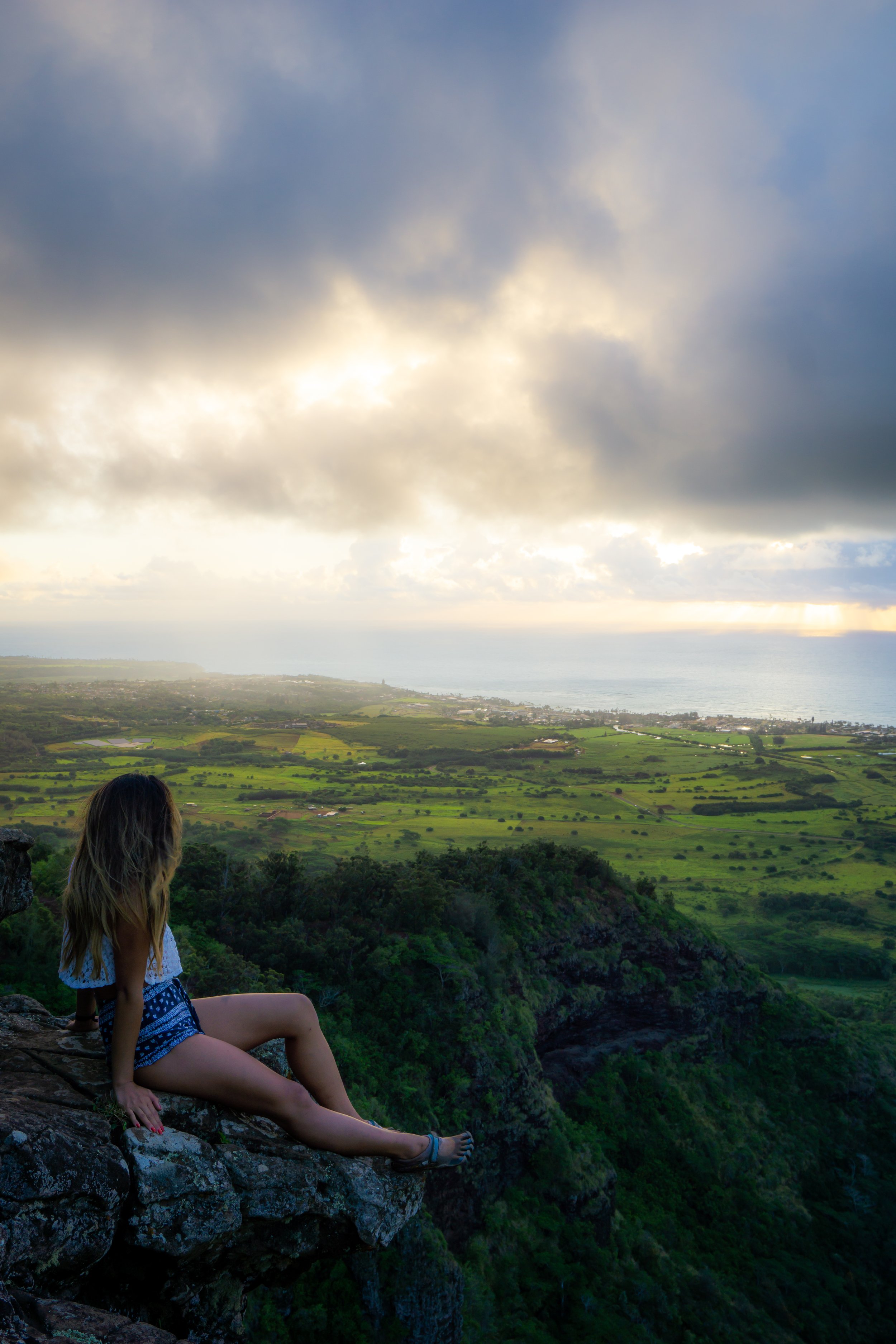Hiking the West Sleeping Giant Trail (Nounou Mountain) on Kauaʻi, Hawaiʻi
Distance: 2.2 miles / 3.5 km
Elevation Gain: ~760 ft. / 232 m
The West Sleeping Giant Trail on Kauaʻi, also called Nounou Mountain, is a local favorite for different reasons than those of the East Sleeping Giant Trail, as the hike through the lower forest is much more beautiful in comparison.
By this, I mean that Nounou Mountain is a favorite for both locals and visitors alike, as either trail to the summit makes for a great sunrise adventure.
However, the West Sleeping Giant Trail is generally loved more for its uniquely beautiful Cook Pine tree tunnel at the beginning of the hike and because parking is easier for the West Nounou Mountain Trail.
For this reason, I personally prefer and recommend hiking the West Sleeping Giant Trail over the east, which you can learn more about in my breakdown below.
East vs. West Sleeping Giant Trail (Nounou Mountain)
East Sleeping Giant Trail
Simply put, the East Sleeping Giant Trail is the harder of the two trails up Nounou Mountain.
This is because it’s longer, there’s more elevation gain, and there’s one additional area that requires some scrambling/ climbing that the West Sleeping Giant Trail doesn’t have.
West Sleeping Giant Trail
The one thing that sets the west trail apart from the east is that the West Sleeping Giant Trail will almost always be muddier after it has recently rained.
However, the West Nounou Trail is my personal favorite between the two because the Cook Pine forest in the lower elevations of the hike makes the trail prettier overall!
Read My Separate Post: East Sleeping Giant Trail
West Sleeping Giant Trailhead Parking
Parking for the West Sleeping Giant Trail is located at one of three different trailheads: the very end of Lokelani Road, the very end of Crossley Road, or along Kamalu Road in Wailua, with Lokelani being the closest of the three.
That being said, the West Sleeping Giant Trailhead parking is typically less competitive than the East because hikers have the ability to choose between any one of these three areas to find parking.
Google Maps Directions: Lokelani Trailhead / Crossley Trailhead / Kamalu Road
Hiking the West Sleeping Giant Trail
Regardless of which trailhead you choose to begin, the West Sleeping Giant Trail begins on a flat, open path between some houses before entering the forest.
That being said, please be quiet and respectful around the houses, especially if you’re going to hike Nounou Mountain for sunrise!
Once the trail enters the forest, expect the hike to be much muddier or as dry as the photos you see here.
Nounou-Kuamoʻo Trail Junction
When the Nounou Trail meets the Kuamoʻo Trail, go left up the the hill through the Cook Pine trees.
East-West Sleeping Giant Junction
Eventually, the Wast Sleeping Giant Trail meets with the trail coming up from the east side.
Here, go right at this split to continue up to the summit of Nounou Mountain.
Read My Separate Post: East Sleeping Giant Trail
Nounou Shelter
Next, the Nounou Shelter will be shortly after the East-West junction, and it’s a good indicator that you’re hiking in the right direction.
From the shelter, the Sleeping Giant Trail continues straight across the open clearing.
Then, just before the Nounou Summit Ridge, there is another section to climb in order to continue higher.
That being said, there are plenty of good points of contact to do it safely, as long as you take your time.
Nounou Summit Ridge
Once above the scramble in the photos above, the remaining hike to the top is much easier than everything it took to get to this point.
On a different note, sunrise on Sleeping Giant is actually better on the summit ridge leading up to the summit than on the summit itself, which has a better view to the west than the east.
Puʻu Nounou (Nounou Mountain)
The summit of Sleeping Giant, more commonly known as Nounou Mountain, is about 1,241 ft. (378 m) and stands high above Līhuʻe, Kapaʻa, and Wailua as a free-standing peak.
This is why it is such a local favorite for sunrise, as views from nearly all sides of the upper mountain are unobstructed on a clear day!
Native Plants on the Sleeping Giant Trail
Since Nounou is such a low-elevation peak, both Sleeping Giant Trails are dominated by non-native/ invasive species.
That being said, there isn’t much in terms of native plants on either Nounou Mountain Trail, with the exception of a few ʻUhaloa and ʻAʻaliʻi.
If you would like to learn more about these and many other native Hawaiian plants from across the islands, I encourage you to check out my separate post linked below.
Read My Separate Post: Native Hawaiian Plant Guide



